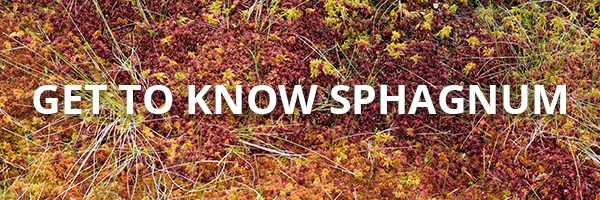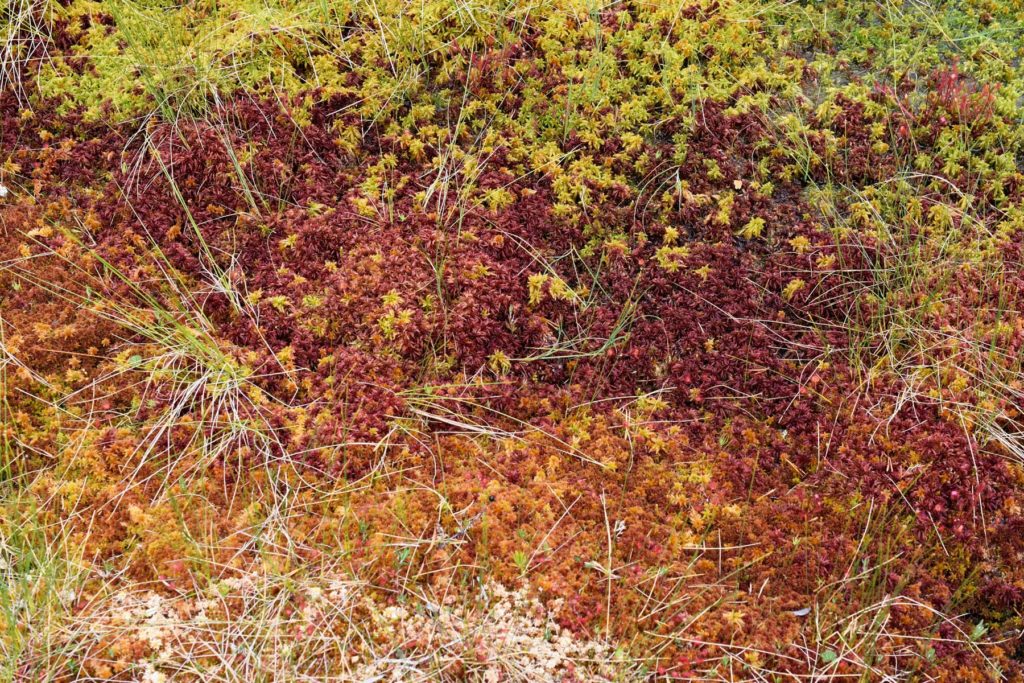
The Sphagnum genus is made up of hundreds of species of low-growing mosses. Even though most people don’t know the term Sphagnum, the image of Sphagnum moss calls to mind the hummocky, wet ecosystem of bogs and swamps. Although Sphagnum can be found across the globe, it is most often associated with the boreal peatlands of the northern hemisphere.
Sphagnum is not very approachable. Right off the bat, most people struggle to pronounce the name. The most common pronunciation of Sphagnum is “S-fag-num,” with the “S-fag” expressed as a single syllable. Once you get past the greeting, the next problem is arranging the encounter. If you want to get up and personal with Sphagnum, you need to get your feet wet.
All About Sphagnum: Hollow vs. Hummock
In northern Minnesota ecosystems, Sphagnum species are common in many wetland habitats. So you can often find Sphagnum mosses in wooded swamps and alder thickets. But it’s in the nutrient-poor bogs and peatlands that they dominate and control the landscape. Bog surfaces are characterized by small mounds of vegetation, called hummocks, surrounded by water-logged hollows. Although it’s true that the entire bog surface can be dominated by the low-growing Sphagnum mosses with their compact, starry-shaped leaves, it’s far from a single-species monoculture.
Hummock species of Sphagnum are different from the hollow species. Look more closely at a single hummock, and you will most likely see a variety of colors, sizes and shapes of mosses that comprise the mound. Some species prefer the northern exposure of a hummock, some are selected to populate the drier tops, and some species are more widely distributed. Using your hands, gently part the mosses at the top of the hummock and trace the stem of a single plant from the surface deep into the hummock. The live stem supports branches and leaves far below the surface, and if you explore deep enough, you can see where the stem is no longer alive, but its structure is still apparent in the topmost layers of peat.
Take a step back and look at the other plants that are living with Sphagnum moss. Woody shrubs of leather leaf, Labrador tea and blueberry pop up through the moss carpet. Stunted black spruce trees appear to be on the verge of succumbing. Vining tendrils of cranberry snake their way across the surface. Tiny hypnum mosses and fluffy cotton grass perch atop the hummocks. Those species have evolved to co-exist with Sphagnum moss. Despite what appears to be unneighborly behavior, Sphagnum shapes its environment in a way that benefits Sphagnum. The ecosystem sustains itself primarily through acidity, with the pH in a treeless bog as low as 3. Most plants are simply not equipped to grow in that kind of environment. Sphagnum also acts to retain water within its structures and slow the passage of water both across and below the surface. Sphagnum likes it wet, and while it is enjoying the wet, acidic conditions of its creation, Sphagnum capitalizes on its success by accumulating depth and raising the elevation of the bog surface. Sphagnum bogs often have a subtle, dome-shaped profile that makes mineralization from surface and groundwater nearly impossible. Species that rely on dissolved nutrients are quickly starved out.

All Peat has Merit
While we don’t harvest Sphagnum peat at American Peat Technology, we’re still fascinated by it and how Sphagnum products dominate in the marketplace. When most people think of peat, they think of the Sphagnum products sold at home improvement stores for use in gardens. The peat you buy at the store improves soil health and water retention and is naturally weed-free—all great things for the home gardener.
At APT, we harvest reed-sedge peat to produce a superior rhizobia carrier for the agricultural industry. All peat may not be created equal, but each has clear benefits and use cases.
If you’re interested in learning more about our product lines, please feel free to dive deeper into our agricultural and water treatment solutions. Or, reach out to the APT team at any time at info@americanpeattech.com or (218) 927-1888.
